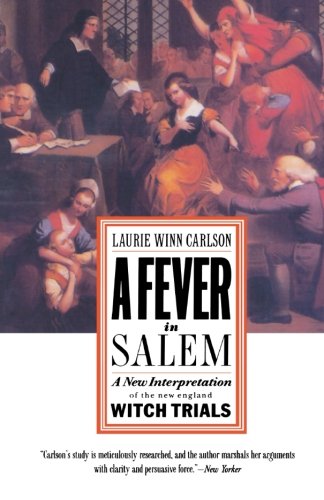Description
In the late winter and early spring of 1692, residents of Salem Village, Massachusetts, began to suffer from ordinary physical and mental maladies. The randomness of the sufferers, and strange symptoms that were seldom duplicated, led residents to suspect an otherworldly menace. Their suspicions and fears eventually prompted the infamous Salem Witch Trials. Even as most historians have concentrated their efforts on the accused, Laurie Winn Carlson, A Fever in Salem makes a speciality of the afflicted. What were the characteristics of a typical victim? Why did the symptoms occur when and where they did? What natural explanation could be given for symptoms that included hallucinations, convulsions, and psychosis, frequently resulting in death? Ms. Carlson offers an innovative, well-grounded explanation of witchcraft’s link to organic illness. Systematically comparing the symptoms recorded in colonial diaries and court records to those of the encephalitis epidemic in the early twentieth century, she argues convincingly that the sufferers suffered from the same disease, and she offers persuasive evidence for organic explanations of other witchcraft sufferers all the way through New England as well as in Europe. A Fever in Salem is a provocative reinterpretation of one of America’s strangest moments, and a refreshing departure from widely accepted Freudian explanations of witchcraft persecution.
The 1692 Salem witch trials have made an indelible impression on our national judgment of right and wrong. Investigations into this ordinary moment in colonial history, when 20 accused witches were executed and over a hundred imprisoned as a result of their “supernatural” infliction of townsfolk and animals, traditionally focus on the accused. In A Fever in Salem: A New Interpretation of the New England Witch Trials, Laurie Winn Carlson focuses instead on the afflicted, examining potential natural explanations for their typical symptoms, which included hallucinations, convulsions, psychosis, and continuously death. She provocatively concludes that the witch hunts of New England were a “response to unexplained physical and neurological behaviors resulting from an epidemic of encephalitis.”
Winn Carlson, an independent scholar based in Washington state, has thoroughly familiarized herself with conventional explanations for the event, which range from the Freudian female neurosis to the sociological community-based socioeconomic problems. In eight methodologically composed chapters, she convincingly illustrates how these fail to account for many relevant facts. Instead, by contrasting the symptoms of 17th-century Massachusetts sufferers with those in other colonies, in Europe, and in more modern times, Winn Carlson supports her claim for an organic cause. A statistical appendix, maps, and chronology further bolster her theory. Academically rigorous without sounding pedantic, A Fever in Salem offers a refreshing interpretation to both the scholar and the general reader of an event that continues to fascinate. –Bertina Loeffler Sedlack














































